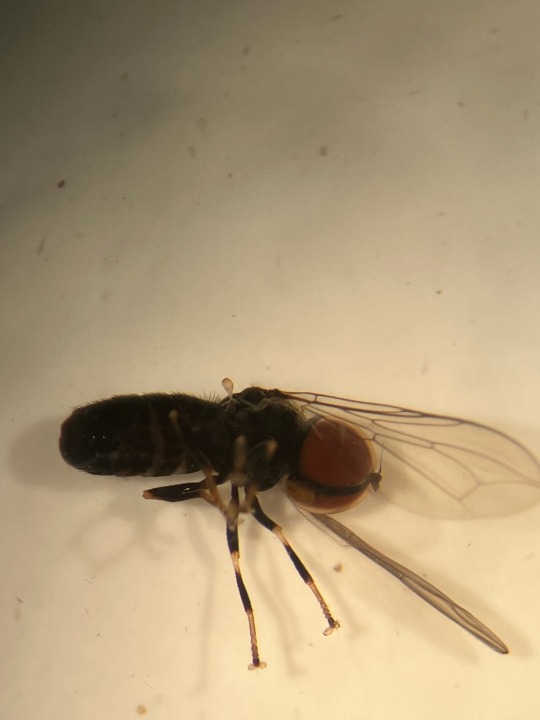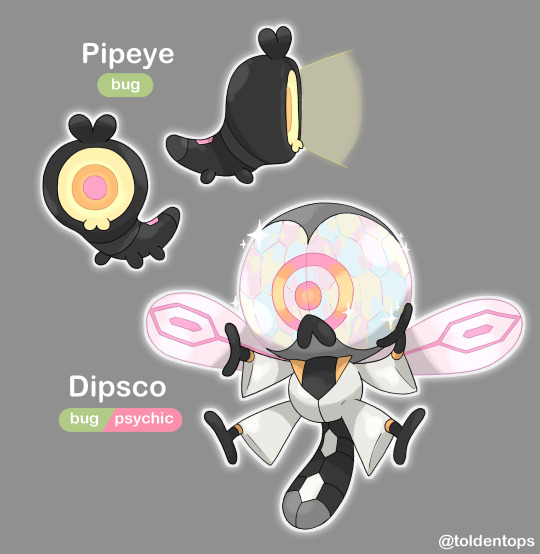#pipunculidae
Explore tagged Tumblr posts
Text

🎈
#diptera#pipunculidae#pencil neck geek#grit eatin' freak#scum suckin pea head with a lousy physique#he's a one man no gut losing streak#nothin but a pencil neck geek
489 notes
·
View notes
Text

PIP SPOTTED
#diptera#pipunculidae#bugblr#bugs#insects#been working through a sample for the past month IDing to family#paloss camera
22 notes
·
View notes
Text

Big-Headed Flies
(Pipunculidae)
1 note
·
View note
Text
if anyone’s wondering what I’ve been up to, I’m in the woods for a 5 week insect field course and am more active posting bug pics on, of all things, instagram, but when I remember to do so and if I’m confident to identify them, pics will go to @pipunculidae !
#al speaks#i’m having a lot of fun#to be fair it Is easier to just post on instagram stories#I feel obligated to tag and caption my bug posts in tumblr#anyways I’m super enriched. it feels so good not to be terminally online
66 notes
·
View notes
Text

Making more 3d models of fakemon! This time starring Pipeye and Dipsco by @palossssssand . It's a really fun and cute design :}}
#3d art#3d modeling#artists on tumblr#game art#pokemon#fakemon#fan art#lychee raichi reishi art#bug#stylised
159 notes
·
View notes
Text

Big headed fly(pipunculidae) + disco ball fakemon
#pokemon#fakemon#bugs#insects#fakemon design#fake pokemon#you have no idea how happy I am with this#one of the designs ever for sure#please for the love of god look up the actual insect it's the funniest shit ever#my art#pipunculidae#big headed fly#pipeye is a flashlight#bogleech#creature design#disco#diptera#edit: jesus christ! 10k?? insane. thank you everyone
12K notes
·
View notes
Text


i've been going through some old vials of insects at work, pulling out things to add to our reference collection, and whatever weird preservation fluid this pipunculid fly's been sitting in for the last 20 years has made it absurdly vibrant compared to how a normal pinned or even live specimen would normally look
184 notes
·
View notes
Photo

Last June I collected during the Diptera Tagung in Hessen on June 24th in Sinntal Schwaerzenfels by sweeping three species of Pipunculidae. A Tomosvaryella sylvatica/coquilletti female, a male Pipunculus, which genitalia are still in a nice KOH bath and a species, which is new to me: Cephalops (Beckerias) pannonicus. Its wings are very typical by the anal vein, which is only visible as a shadow.
1 note
·
View note
Text
FOUND IT!!!!! this looks like a female individual of a Tomosvaryella sp., a genus of pipunculidae w/ cool stabby ovipositors.

extra pic from here


I don’t know the species name yet but how awesome is this parasitoid fly whose head evolved to be almost entirely eyes while her ovipositor (egg layer) evolved into a stabby needle?! It doesn’t count as a stinger since it’s not venomous, in fact nothing else in nature has a stinger like bees and wasps do but this is one of the closest convergent adaptations by another insect group!
#pipunculidae#diptera#insect id#big headed fly#still cackling at those head to body ratios#sir is this your bug
2K notes
·
View notes
Text
today we are appreciating pipunculidae

ahahahahaha oh my god

p.....podcast microphone lookin dude im in tears

AHAHAHAHAHA THE TEENY ANTENNAE!!!!!! INCREDIBLE
pls stay weird, diptera
22 notes
·
View notes
Note
Saw some kind of dust sized creature that was 40% eyes and 60% wings today, reminded me of you

we love a little guy in this house
51 notes
·
View notes
Text

PIP SPOTTED
#paloss camera#diptera#pipunculidae#bugs#insects#bugblr#one day I’ll learn to ID these guys to species
13 notes
·
View notes
Text
Nosing Around with the Parasitoids

Having looked at the hunters, let us now consider some parasitoids in the world of flies. At least some are bound to be present in your garden. Some are highly specialized, and can even be restricted to a single species of host. Others are not as discriminating. Females lay eggs inside or on a host, and the hatched larvae feed and grow on the living host. Their presence is a mixed bag for gardeners. Some of their prey are desirable garden insects such as some of our most beautiful butterflies, but they also parasitize a great many unwanted insects. Tachinid fly larvae develop within their insect host (they are endoparasitoids). They do not, however, prevent the host from continuing its own growth and development.
The term for this is “koinobionts,” a phenomenon more often observed in the parasitoid wasps than flies. The victim continues to grow and eat, even when parasitized in an early larval stage. (In contrast, an idiobiont is a parasitoid that halts the growth and development of its host, usually by injecting a paralyzing toxin.) The parasitoid usually emerges from the pupal stage of the victim, by which time the hapless host has died. This means that host populations are not always controlled by tachinids in the first generation, although subsequent generations may be suppressed. Most tachinids, as mentioned earlier, have a broad host range, parasitizing all sorts of insects. This is unusual for parasitoids and certainly boosts their value as garden allies. Compsilura concinnata, for instance, attacks almost 200 species of insects—including the dreaded gypsy moth. While some tachinids lay eggs directly on their host, others lay thousands of micro-eggs on leaves, where they are ingested by the host. Some incubate their eggs internally, and lay eggs with fully formed larvae that emerge immediately when laid on or near their hosts. Others have larvae that go through progressive stages of development and their first stage (first “instar”), called a planidia, is actually mobile and able to hunt for a host right after hatching—first things first! Later instars are sedentary, and adapted for eating. An interesting member of the food web is a taxon of odd-looking little insects called thick-headed flies (family Conopidae), named for their broad head. Many are mimics, resembling wasps or bees, causing them to be noticed more often than some common flies. Nectar feeders as adults, in the larval stage most are endoparasitoids. They intercept their intended host in flight, and pry open the segments of the abdomen to deposit an egg with a special structure called a theca, commonly and graphically referred to as a “can opener.” One subfamily has barbed eggs it shoots onto the host with a harpoonlike ovipositor! They parasitize a broad range of insects, such as honey bees, bumble bees, social wasps, cockroaches, and some flies. Look for adults on many common garden flowers. The big-headed flies (family Pipunculidae) are easily recognized by the huge eyes that make up most of their head, providing correspondingly good vision, and by their typically black coloration. They are mostly parasitoids on hoppers, spittlebugs, cicadas, and a few on crane flies. Females inject a single egg into nymphal or adult hoppers (or into crane flies). The larva feeds internally and exits to pupate; the life cycle is completed in soil or leaf litter. The adults feed on honeydew secretions. You may spot them hovering, much like hover flies, over vegetation in your garden. With their furry round bodies, it is easy to mistake the aptly named bee flies (family Bombyliidae) for bees. Fairly common in gardens, adults hover above flowers, prodding for nectar with their long straight proboscis. When at rest, their wings are held at a backwards angle characteristic of flies. They are sometimes important pollinators, especially on flowers with long narrow floral tubes such as verbena, lungwort, flowers in the mustard family, lavender, thistles, and many more. Bee flies are ectoparasitoids, developing externally on a host’s body. Like some of the tachinids, they are hypermetamorphic—that is, the initial mobile larval stage (planidia) is very different in appearance from the larval stages that follow and feed on the host. Although they parasitize a variety of insects and spiders, their preferred hosts are bees and wasps.
1 note
·
View note
Link
0 notes
Text
Breeding methods for Pipunculidae Diptera, endoparasites of leafhoppers
http://dlvr.it/PlHnsB
0 notes
Text





if I may kindly direct your attention to this guy I made at craft night
#bugs#insects#entomology#diptera#pipunculidae#arts and crafts#my art#he’s just a silly little guy#hes made out of styrofoam ball construction paper and pipe cleaner#speedran in 1 and a half hours
207 notes
·
View notes